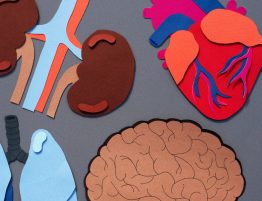
After steadily declining for nearly a decade, the heart disease death rate rose significantly during the first year of the COVID-19 pandemic, new research finds. The increase erased years of progress, especially among Black and younger adults.
“Prior to 2020, death rates from heart disease had been declining among adults for decades,” which has been recognized by the Centers for Disease Control and Prevention as one of the 10 greatest public health achievements of the last century, lead researcher and CDC epidemiologist Rebecca C. Woodruff said in a news release.
“The increases in death rates from heart disease in 2020 represented about five years of lost progress among adults nationwide and about 10 years of lost progress among younger adults and non-Hispanic Black adults,” Woodruff said.
The findings will be presented at the American Heart Association’s Scientific Sessions conference being held in Chicago and virtually starting Saturday. The data are considered preliminary until full results are published in a peer-reviewed journal.
COVID-19 was declared a global pandemic in March 2020, leading to widespread stay-at-home orders and severely limiting access to health care. Growing evidence also suggests the coronavirus put some people at higher risk for new or worsening cardiovascular disease.
“The COVID-19 pandemic disrupted many aspects of daily life, including access to preventive health care, which may have led to delays in detecting and treating heart disease,” Woodruff said. “We expected to see an increase in heart disease death rates among adults, however the magnitude of the increase was striking.”
Using the CDC’s Wide-Ranging ONLine Data for Epidemiologic Research, or WONDER, database, researchers analyzed aggregated death certificate data from 2010 to 2020. The analysis showed the U.S. heart disease death rate fell by 9.8% from 2010 to 2019, then rose by 4.1% in 2020, returning to roughly the level in 2015.
The increased heart disease death rate was particularly high among younger adults, representing about 10 years of lost progress for this group. From 2010 to 2019, the death rate fell by 5.5% for adults 35 to 54. But in 2020, it jumped 12%, not only erasing prior progress but exceeding levels from a decade earlier. This also was true for adults 55 to 74. In this group, the death rate initially fell by 2.3% between 2010 and 2019, then rose 7.8% in 2020.
Black adults also experienced about 10 years of lost progress. In the decade leading up to 2019, the heart disease death rate in this group fell 10.4%, then jumped 11.2% in 2020, returning to the 2010 rate.
Other pandemic-related factors – such as decreases in physical activity and increases in smoking and alcohol use – also may have contributed to the reversal, AHA President Dr. Michelle A. Albert said in the news release. Albert, who was not involved in the new research, is the Walter A. Haas-Lucie Stern Endowed Chair in Cardiology and professor of medicine at the University of California, San Francisco.
“These social determinants of health have a larger effect on people who are economically disadvantaged, Black people, Hispanic people and Indigenous and Native individuals, so then you have a domino effect resulting in higher death rates and more disease among these populations,” Albert said.
“If you are a person who has not received medical care for one or more years because of the pandemic, please seek out care from a health care professional,” she said. Health care professionals also should identify which of their patients “have dropped off their radar and reach out to those people and offer medical assistance.”
Find more news from Scientific Sessions.
If you have questions or comments about this American Heart Association News story, please email [email protected].





